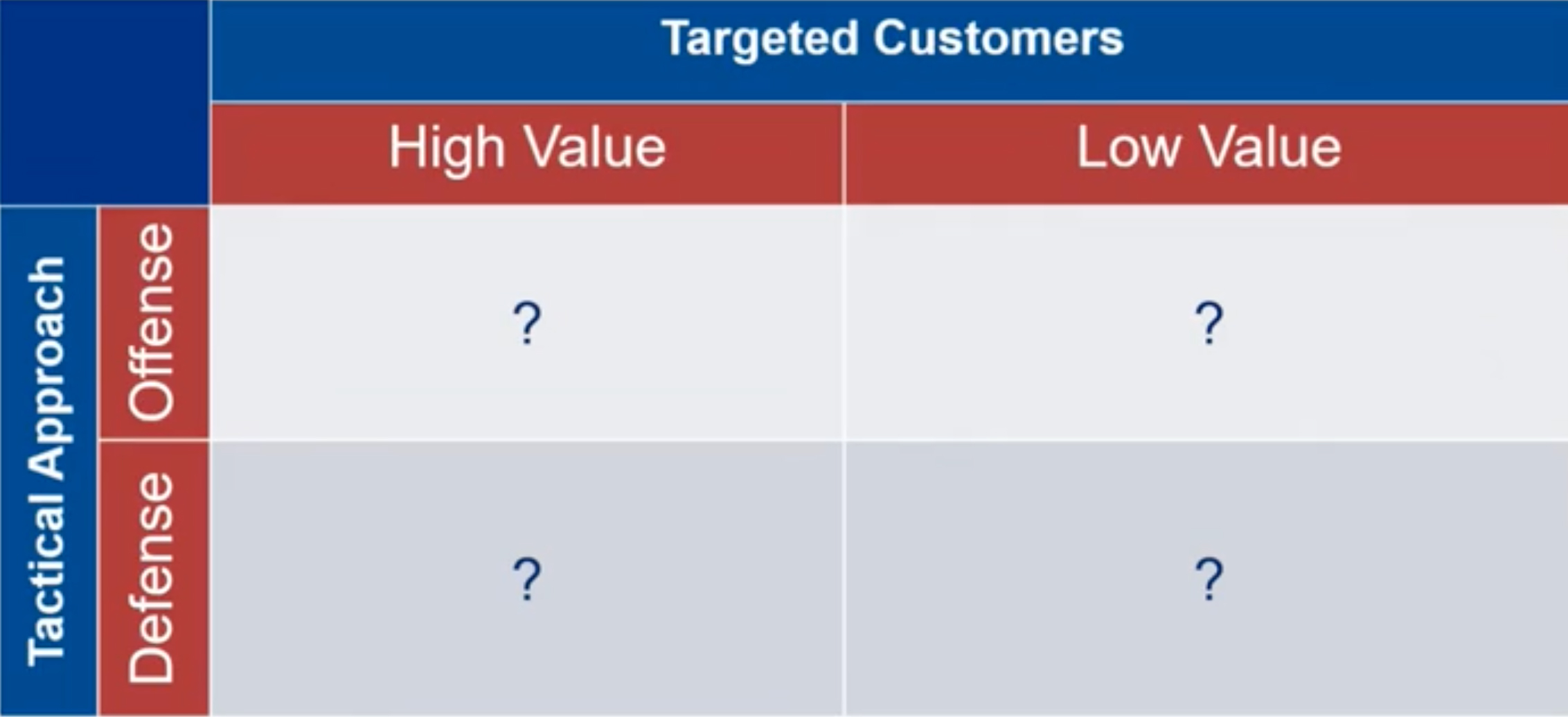The Data Handbook
How to use data to improve your customer journey and get better business outcomes in digital sales. Interviews, use cases, and deep-dives.
Get the bookCustomer loyalty is the currency on everyone's lips, the sought key to unlock the treasure chest at the end of the rainbow. But, what really is customer loyalty? What defines it, can you earn it, and if you do, what value will it really bring to your business?
The mechanics of a modern loyalty program consist of so much more than cross-selling and upselling. Understanding what kinds of experiences your business should offer requires holistic strategic focus.
 On the 10th of November we hosted a webinar on the topic where we welcomed back Professor Peter Fader from The Wharton School, University of Pennsylvania, together with a panel of experts from the pioneering industries within loyalty strategies in the Nordics: Pekka Antila, Head of Loyalty at Finnair, Heli Viljanen, Director, Loyalty DTC at Reima and Viktor Månsson, CRM Operations & Data manager at Youty Group (with ecommerce beauty brands Nordicfeel, Eleven, Blush).
On the 10th of November we hosted a webinar on the topic where we welcomed back Professor Peter Fader from The Wharton School, University of Pennsylvania, together with a panel of experts from the pioneering industries within loyalty strategies in the Nordics: Pekka Antila, Head of Loyalty at Finnair, Heli Viljanen, Director, Loyalty DTC at Reima and Viktor Månsson, CRM Operations & Data manager at Youty Group (with ecommerce beauty brands Nordicfeel, Eleven, Blush).
Setting the stage Professor Fader set out to bring specificity to the tactics that are commonly in play when we are concerning ourselves with questions of customer loyalty. Often, he states, customer loyalty tactics come in the form of loyalty programs that are grossly over-complicated, and to make matters worse - aimed at the wrong customers.
What we are really concerning ourselves with when it comes to customer loyalty in the business of keeping customers longer and making them better customers over that horizon i.e. retention and development. For this, we need to remember what a customer-centric approach teaches us: not all customers are created equal. If we recognise the differences across our customers and celebrate them we can start to reap real benefits.
The first port of call is to figure out what customers are our best ones, the ones that bring you the highest value over time (read more on customer lifetime value here). Then you need to figure out in what way you can view them as our biggest growth opportunity while still maintaining a reasonable relationship with the others. It’s not only a matter of putting a different offer out there depending on what customer it’s for. It’s a matter of using fundamentally different tactics that are better suited for some customers than others.
Retention and development
According to Professor Fader, many companies have multiple channels, programs and activities for acquiring new customers but are over-simplistic when it comes to keeping them. Adding fuel to the fire, when it comes to retention companies often have a detrimental mindset about it. So much of what is called retention is about locking customers in, taking them hostage, rather than making them want to stay.
In turn, when we talk about customer development and about getting more value out of our customers, we usually put it down to cross-selling and upselling. Whilst there is nothing wrong with cross-selling or upselling Professor Fader notes, we should go beyond that. We need to look at what our aim really is with our loyalty activities to make them make sense for our different sets of customers: are we playing offence (retention) or are we playing defence (development)?
For this, Professor Fader proposes a 2x2 framework. Oversimplified? Maybe. However, as Professor Fader argues, even a simple framework is useful to make sense of and approach your strategy rather than merely throwing things at the wall to see what sticks. 
The framework proposed is useful for understanding what tactics are best aimed at what customers. For example, playing offense with low value customers are activities in line with the classic loyalty program: buy 9 get 1 free, i.e. keep the low value customers buying more.
“Most companies are using loyalty programs for the wrong reason, and aiming it at the wrong customers. If we have real clarity about the differences within our customer base we’ll have much better sense.”
The framework also constitutes playing defence with low-value customers as regular customer service and defence with high-value customers as the Key Account Management practices commonly used in B2B sales.
An important point, when it comes to discussing classic loyalty programs is the distinction between playing offence with low value versus high-value customers. Whilst activities for low-value customers are geared towards keeping them around by giving them deals and freebies, activities geared towards high-value customers are concerned with having them pay extra for better services. An example of playing offence with high-end customers Professor Fader notes LinkedIn premium: offering services of value to high-value customers at a premium price.
The moral of the story is, a great loyalty program or world-class customer service will not turn your so-so customers into high-value customers. If you are in the business of making money whilst still catering to your customer wants and needs, you should let customer lifetime value guide you to know what customer gets what offer, service or treatment. Keep your low-value customers around by offering them deals and get more value out of your high-value customers by offering them better services that they are willing to pay for, increasing their lifetime value even more.
Breaking this down, what Professor clearly states is:
- The more we understand the differences across our customers and that the opportunities we have when serving them in a differential way are going to serve us much better than simply delivering the same tactics across all of them.
- The more we appreciate these differences, the more we need to think carefully about what retention and development tactics we are going to do at which time and for what customers.
- You need to have a plan. A long term roadmap of what tactics fit to use for what customers and adapt them to the changes in the market as needed.
Taking theory into practice
In the panel discussion following Professor Fader’s keynote we took a closer look at customer loyalty processes in practice together with Pekka, Heli and Viktor from Finnair, Reima and Youty.
How do you segment your customers?
Segmentation can look different over industries and product offerings. For example, Reima takes into account the life stage of their customers when creating a loyalty program for them. If the aim of the loyalty program is to get their customers coming back, they figure they need to take into account which stage of life their customers are in to understand their future value as customers to Reima. For example, new parents have different needs than parents having their second or third child. Taking it back to basics, a customer-centric approach requires you to embrace the differences within your customer base. For this, you need to understand them, your business objectives and their value. As Pekka from Finnair notes, there is a difference between their most frequent flyers and the customers that are comparing them to not only other airlines but also other modes of transportation at the point of purchase. These segments are vastly different and will require different activities from Finnair to deliver differentiated value. In every case, taking a close look at your customer data is key.
How can your company make customers feel differently about being loyal?
Here the difference between a loyalty program and things we do to make customers loyal in a broader sense come into play: Branding. Like professor Fader states, branding is too often too different for how we go about acquisition, retention and development. In how we measure, execute etc. Make sure it links up with our tactics. It is hard to put an exact value on a brand. However, it is arguably powerful and important albeit not as accountable as customer acquisition, retention and development. What branding will do is help any customer-centric activity be better and more efficient. It will help you acquire slightly better customers slightly more cheaply, it’s going to make them stay slightly longer, purchase slightly more often and spend slightly more than they would otherwise. It is what will bring synergies across your acquisition, retention and development tactics, make them fit well together and enable the caring and feeding of your customers.
How do you get started?
Like we stated at the beginning of this blog: It all starts with asking the question why.
Citing Viktor Månsson from Youty in the webinar: What we’re really looking for is transactional loyalty. If and when you decide to concern yourself with earning customer loyalty you need to understand what is needed to increase the value of the value or the number of transactions. With each activity, you also need to ask yourself if this is something that is for a select few of your customers or if it is something you should already be offering everyone. What extra value would it bring and for whom?
“Walk through the customer journey.” - Pekka Antila, Finnair
A good start when figuring out how to better serve your customers in a way that increases their business with you is to walk through the customer journey. Find the emotional leverage that would drive the behaviour you are after. Define what it is and understand what is the funnel for customers within that. Find out how to elevate the highs or soften the lows and see if that drives the desired behaviour or not.
Remember, as Heli Viljanen so simply stated:
“A/B-testing is always a good way to start.”
See what works. Start small, test and document the learnings as you go.
How would one go about recruiting the most loyal customers in the first place?
Here we come full circle. You’d need to look at the lifetime value of your customers. What characteristics define our most valuable customers, our heaviest users?
“Stop guessing and look at the data.”
How do they use your product or service, what are their characteristics? These insights from these data points are what you need to use when directing acquisition activities. Don’t forget - when talking about targeting these customers, there are algorithms set up to help you do just this, find the same type of customers, namely lookalike audiences. Let them do the work for you!
If you didn’t catch the full webinar you can watch the full webinar on-demand to delve deeper into the discussions and learn how to leverage customer loyalty to the fullest!
The Data Handbook
How to use data to improve your customer journey and get better business outcomes in digital sales. Interviews, use cases, and deep-dives.
Get the book




